Large reverse osmosis pure water equipment working principle: Chemical Water Treatment Plant
Reverse osmosis technology Reverse Osmosis Equipment
With the report of raw water analysis and the different requirements in different field, we can make a appropriate design for you.
1) Adopts RO membrane from VONTRON, which can remove 99.7% inorganic salt, heavy metal ion and completely get rid of colloid, microbiology organic materials, germ, protozoa, pathogens, bacteria, inorganic chemical and so on.
2) No need to add any chemicals, stable pure water quality, and no pollution drained, low produce cost.
3) Equipped with pretreatment system, such as active carbon absorption filter and refined quartz sand filter
4) 304 stainless steel rack and pipe accessories connection.
5) Equipped with auto pressure protection system and on -line monitor.
6) Automatically and manually wash RO membrane. Also the design of washing the RO membrane is by chemical solution (citric acid or sodium hydroxide optional)
7) The lifespan of the whole system is long, operation simple, the applicability is strong.
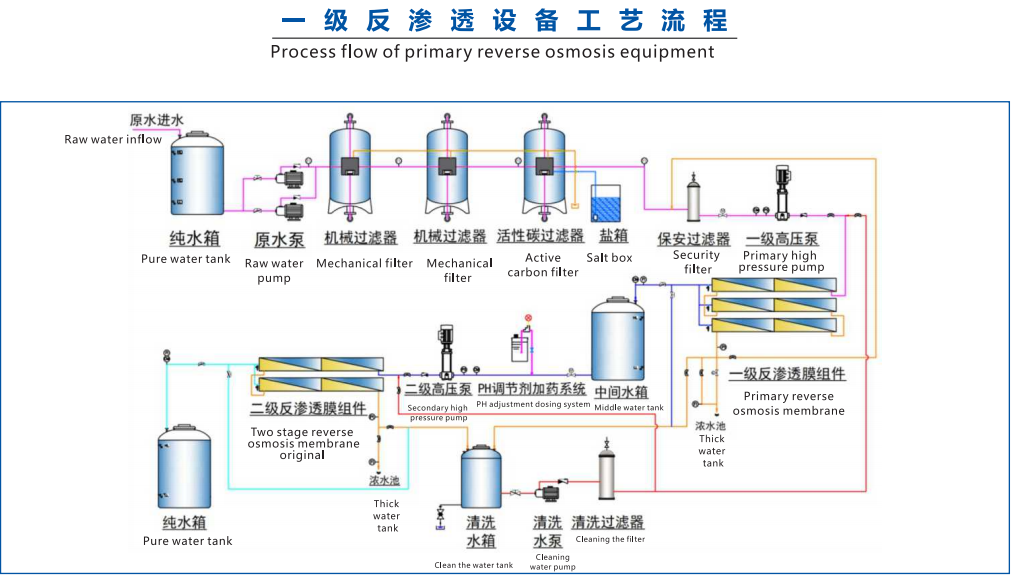
RO reverse osmosis membrane 0.0001 micron depth filtration
The high-precision O-membrane, which is only 1/10,000 of a human hair, is used to deeply filter rust, sediment, inorganic heavy metals, bacteria, scale, organic substances, etc. in the water to ensure the purity of the water.
Inorganic matter: Nitrate ammonia removal rate>90.9% Chromium removal rate>97.1%
Heavy metals: cadmium removal rate>99.8% chloroform removal rate>99.9% gasification removal rate>97,8%
Organic matter: lead removal rate>99.9% carbon tetrazide removal rate>99.9% calcium magnesium ion removal rate>99,7%
Large reverse osmosis pure water equipment Products real shot
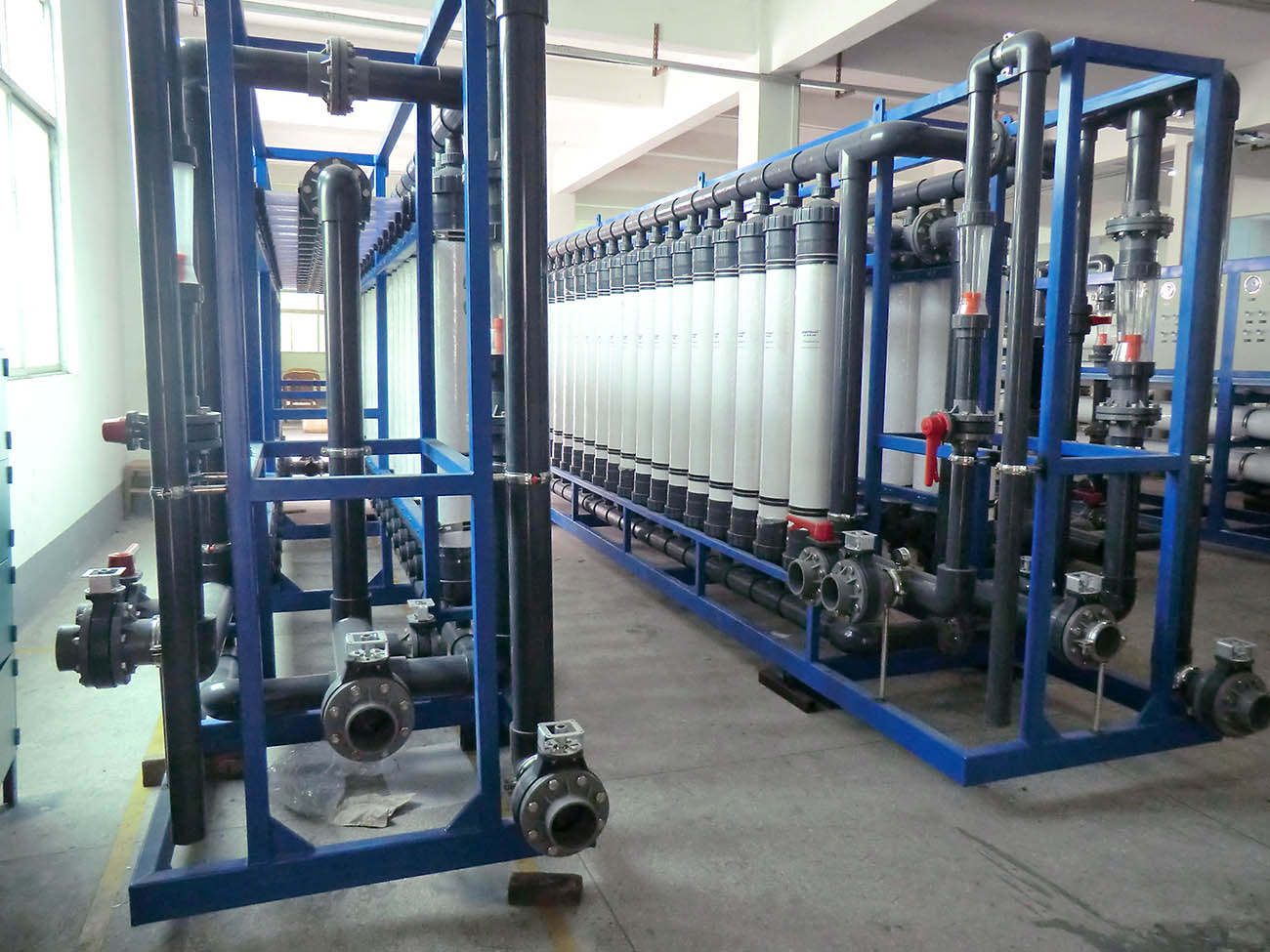
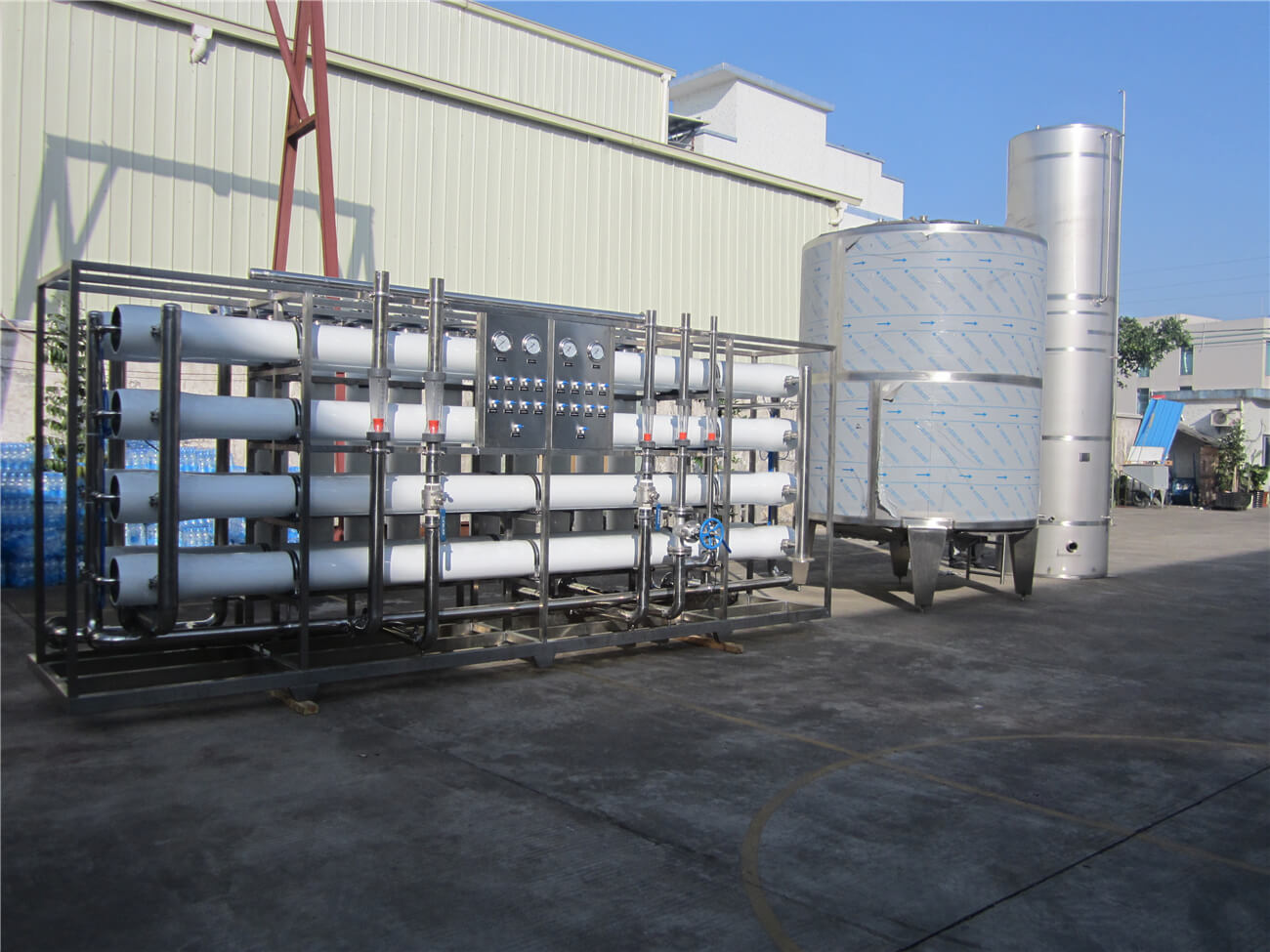
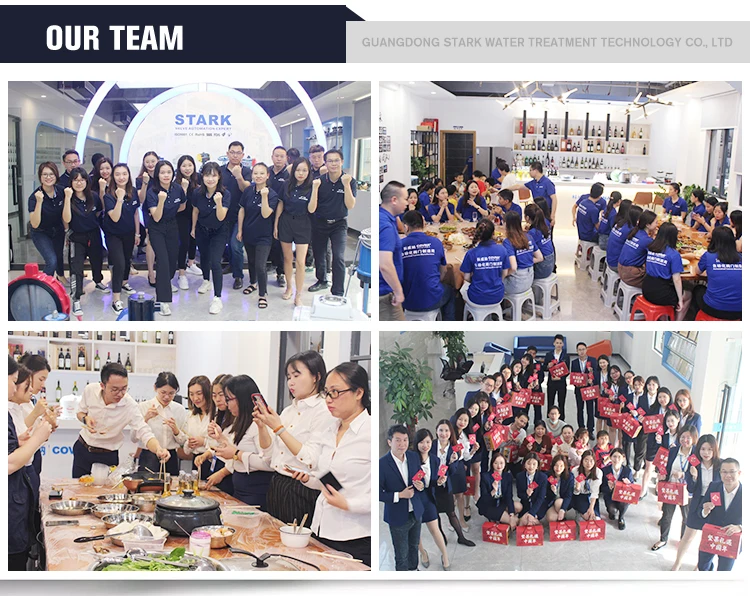 Guangdong Stark Water Treatment Technology Co., Ltd. is a company that focuses on watertreatment plant and is committed to the research and development, production, sales and after-sales service of environmentally friendly water purification industrial products.
Guangdong Stark Water Treatment Technology Co., Ltd. is a company that focuses on watertreatment plant and is committed to the research and development, production, sales and after-sales service of environmentally friendly water purification industrial products.
The main production and operation of water treatment plant: reverse osmosis system, ultrafiltration system, EDI desalination system, sea water desalination plant, brackish water desalination plant. Products are widely used in electronics, electroplating, power plants, medicine, petroleum, chemical, food and beverage, printing and dyeing indutries. Starck strives to be the forefront explorer of water treatment equipment at home and abroad!
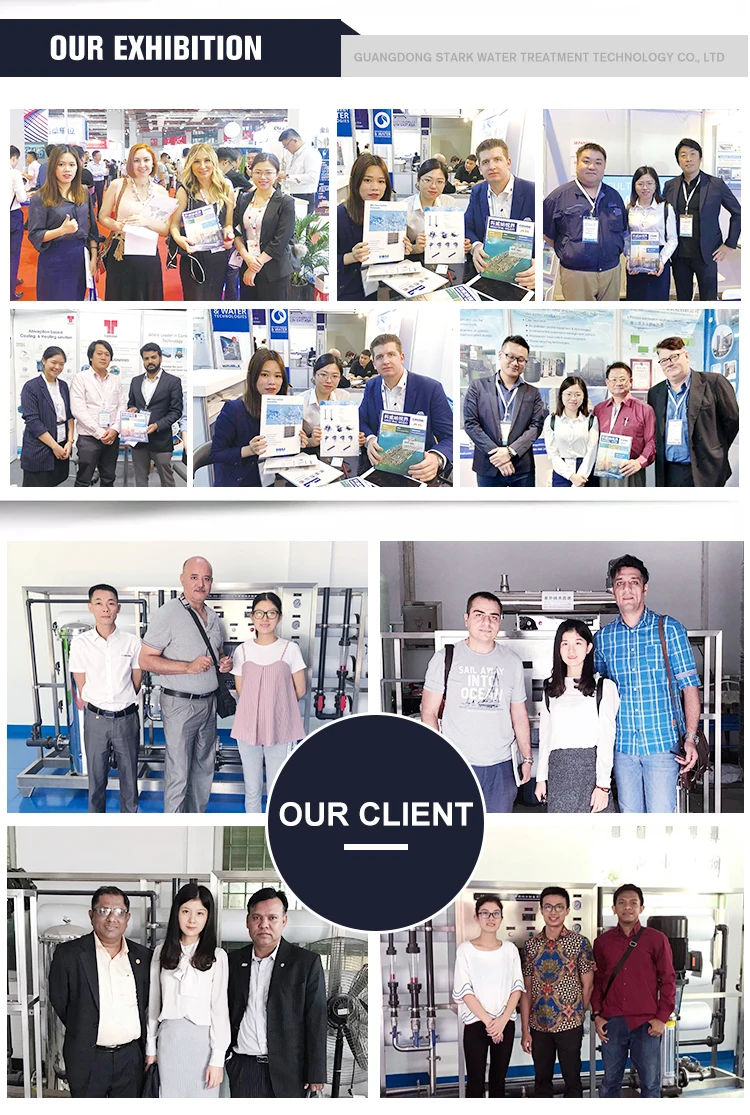
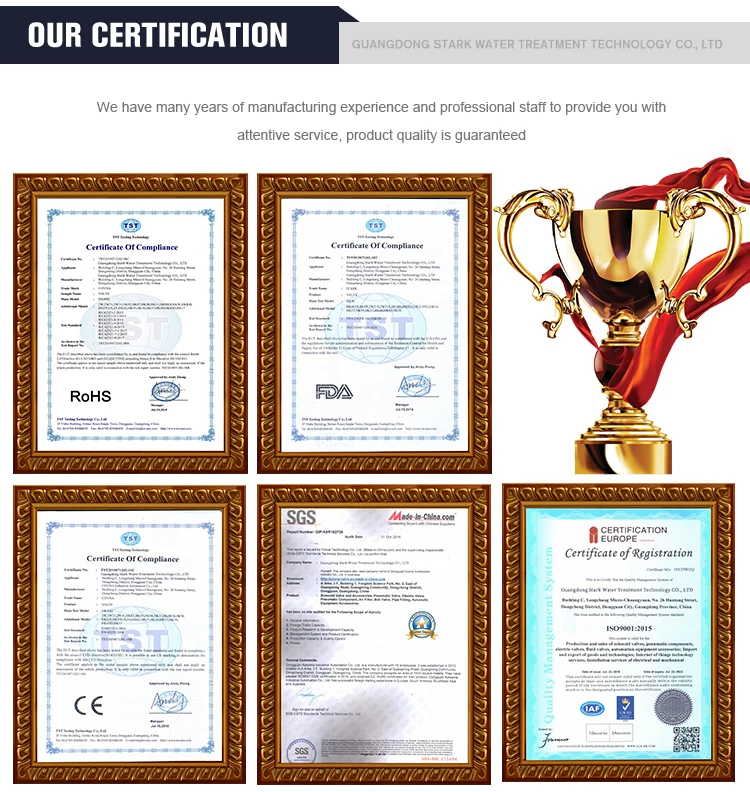
HOW REVERSE OSMOSIS WORKS
The osmosis process is a naturally-occurring phenomenon where less concentrated saline solution tends to migrate to a more concentrated solution. Osmosis occurs everywhere in nature, from our kidneys absorbing water from our blood, to plant roots absorbing water.
A semipermeable membrane, usually made of thin-film polyamide is used to clean water which is pumped past its input side under pressure of up to 15 bar and up to 220 psi in a cross-flow direction. From 15 to 70% of the water that passes through the membrane will do to permeate, while the remainder leaves the membrane as a concentrate containing 99% + of the feedwater TDS.
Reverse osmosis is the same process mentioned above but in reverse. This type of system will remove 99% of organic and inorganic contamination
PRE-TREATMENT REQUIRED FOR RO WATER PURIFICATION
However, Reverse Osmosis does not work on its own. The purification process is only as good as the pre-treatment of the water that is feeding it. Certain contaminants will damage Reverse Osmosis, including free chlorine, calcium and magnesium.
So you have to pretreat the freed water with activated carbon to remove the free chlorine and then a water softener to strip out the calcium and magnesium before it can be put through the RO system.
If you fail to do this, then the free chlorine in the water will degrade the membrane and let organic contaminants through, and the calcium and magnesium will scale the membrane up, reducing its efficiency and working life.
This is the reason many industries consider Reverse Osmosis to be wasteful, time-consuming and expensive. The conventional alternative is deionisation.
APPLICATIONS FOR REVERSE OSMOSIS WATER PURIFICATION
Reverse osmosis systems are typically used to treat surface, ground and brackish water from small to large flows. Many industries use the reverse osmosis system to treat their water. These industries include metal finishing, boiler feed water, semiconductor manufacturing and pharmaceutical.
VULNERABILITIES OF RO PURIFICATION
All RO purification systems depend on good pre-treatment to the feed water. This is achieved by the use of Organic Scavengers, Activated carbon media and base exchange Water Softeners. It is true to say that excellent pre-treatment is a requirement for long, reliable and efficient Reverse Osmosis operation.
Reverse Osmosis membranes will not tolerate any form of hydraulic shock. RO must be installed in a carefully designed water purification system with all of the necessary safeguards and monitoring.
This is where an ongoing partnership with the experts at STARK Water Systems will pay dividends.
A chemical attack happens when a membrane comes into contact with an oxidiser like chlorine, which will burn the membrane and affect performance. Activated carbon is a prerequisite for this purpose.
If you are unsure about the benefits of reverse osmosis for your application, our team members can help. They can not only recommend the right water purification system for you, but can also answer your questions about any type of purified water system and technology available.
Visit our contact page to view some of our reverse osmosis systems or get in touch with us email or phone.
FAQ
1.Are you manufacturer or trading company ?
Yes, we are manufacturer. Our factory is in Guangzhou Baiyun and it is very near to Baiyun airport. When you come to China, you can visit our factory.
2.What do I know before buying reverse osmosis water plant ?
1. Pure Water Production Capacity (L/day, L/Hour, GPD). 2. Feed Water TDS and Raw Water Analysis Report (prevent fouling and scalling problem) 3. Iron and Manganese must be removed before raw water enter reverse osmosis water filtration membrane 4. TSS (Total Suspended Solid) must remove before industrial water purification system’s membrane. 5. SDI (Silt Density Index) must be less than 3 6. Must be sure your water source does not have oil and grease 7. Chlorine must be removed before industrial water treatment system 8. Available electrical power voltage and phase 9. Layout of place for industrial RO reverse osmosis system
3.What does TDS mean ?
First, we see the full description of abbreviation. T means total, D means Dissolved and S means Solids. Total Dissolved Solids. Why it is important for us ? World Health Organization (WHO) Guidelines for Drinking Water Quality The palatability of water with a total dissolved solids (TDS) level of less than about 600 mg/l is generally considered to be good; drinking-water becomes significantly and increasingly unpalatable at TDS levels greater than about 1000 mg/l. The presence of high levels of TDS may also be objectionable to consumers, owing to excessive scaling in water pipes, heaters, boilers and household appliances
4.What is the difference between UF and RO membrane ?
Reverse osmosis and ultrafiltration, commonly referred to as RO and UF, use membrane technology. The reverse osmosis system uses a semipermeable membrane that separates 99.99% of inorganic dissolved material from the water molecule. The ultrafiltration system uses a hollow fibre membrane to stop solid debris and microscopic contaminants. UF is a mechanical filter, but it can filter water down to the superfine level of 0.01 micron, hence the name ultrafiltration. Ultrafiltration is a filter system, while reverse osmosis is a process where molecules are separated.













